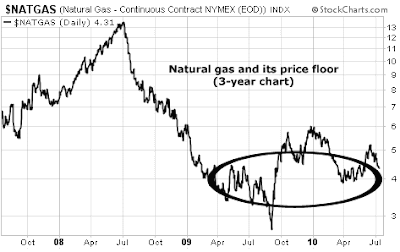Li Lu, the hedge-fund manager who helped Berkshire Hathaway Inc. find profits in China, may push Warren Buffett’s investment company to make more deals outside the U.S. if he takes a role at the company.
“He is a person that Buffett has confidence in from a trust standpoint and who has experience from an international standpoint,” said Michael Yoshikami, who oversees about $1 billion, including Berkshire shares, at YCMNet Advisors in Walnut Creek, California. Hiring Li would mean “Buffett recognizes that the strategy that has worked in the past has to be adjusted in the new environment where more stable economies are likely to grow at slower growth rates.”
Li, 44, is in line to be hired as one of the executives who would eventually replace Buffett, the 79-year-old chief executive officer, and help manage Berkshire’s investments, the Wall Street Journal reported. Berkshire Vice Chairman Charlie Munger said “it’s a foregone conclusion” that Li would probably become a top investment official at Berkshire, the Journal reported.
Buffett is seeking more opportunities abroad after the 2008 investment in China’s BYD Co., which has jumped eightfold. Li helped arrange the deal, according to the Journal.
Buffett plans to tour Japan and India next year in search of deals. In May, he praised the prospects for economic growth in China. Omaha, Nebraska-based Berkshire, which Buffett has run for four decades, is ready to spend $10 billion on its next takeover, Buffett said this year.
Investment Soars
Berkshire’s 9.9 percent stake in BYD, the Chinese car and battery maker, soared to a market value of $1.99 billion at the end of December from a purchase price of $232 million. Li’s assistance on BYD helped Berkshire make the deal, said Thomas Russo, a partner at Gardner Russo & Gardner in Lancaster, Pennsylvania.
“He’s the person who could bridge the cultural gap with the BYD founding families,” said Russo, a Berkshire investor. Li helped Berkshire win “terms that are so different than what most Western companies have experienced” in China, Russo said.
Li started a fund with money from Munger, and he wrote the forward to the Chinese version of the Berkshire executive’s Poor Charlie’s Almanack. In the English-language collection of Munger’s quotes and ideas, Buffett wrote the forward.
Munger’s Collaborator
Li’s original fund had annual compound growth of more than 29 percent, from inception in January 1998 through the end of 2009, the manager said in Poor Charlie’s. Another fund posted an annual compound return of more than 36 percent, Li said.
Li, former president of the Student Congress on Tiananmen Square, graduated in 1993 from Columbia University, where Buffett went to business school. The money manager met Munger after college and the two exchanged thoughts on investing, according to an essay Li wrote for the China Entrepreneur Magazine in May and posted on the website of his hedge fund, Himalaya Capital.
Buffett, Munger and Li didn’t return calls and e-mails to their assistants.
In an interview with the Journal, Buffett declined to rule out the possibility that he would bring in an investment manager while still CEO at Berkshire. Buffett wouldn’t discuss succession plans specifically, the newspaper reported.
Buffett’s responsibilities will be split upon his death or retirement among at least three people, the company has said. A CEO will oversee the collection of more than 70 operating units assembled by Buffett and Munger, and one or more investment managers will allocate capital and manage Berkshire’s portfolio. Buffett’s son Howard will probably assume the position of non- executive chairman to preserve the firm’s culture.
‘High-Grade’
“I have the pleasure of knowing Li Lu and he is a brilliant and high-grade individual,” Whitney Tilson, founder of hedge fund T2 Partners LLC, said in an e-mail. “I am thrilled for him as well as for Berkshire Hathaway, which is one of our largest positions.”
Buffett said last year that he had four candidates to succeed him as chief investment officer. He didn’t publicly name them. Earlier, he’d said that he would audition managers who are “genetically programmed” to avoid large risks.















